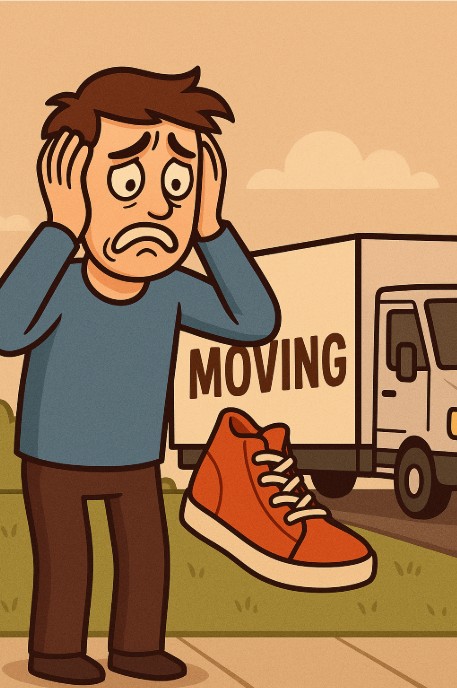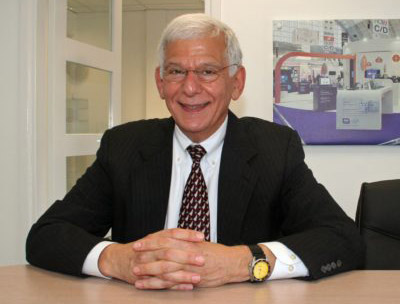How many more nails in their coffins can movers endure? On February 20, 2019, Mark Kirschner, CEO of Wheaton World Wide Moving, said,
“The household goods industry has matured, and there are limited opportunities for growth. Our industry finds itself in a conundrum. Even in an environment in which shipment count has declined by nearly 300,000 since 2000, capacity is also continuing to drop, making it difficult to service the existing demand. The status quo offers limited ability to properly handle any short-term increase in demand or a longer-term spike as millennials and Baby Boomers begin to buy houses or continue to downsize and urbanize.”
Movers don’t have to read the news to tell them that residential moving revenues are going down. Lower revenues lead to worse price competition in an industry that is traditionally plagued by marginal profit margins.
What’s causing this? In our booming economy one would expect more people to move, right? Unfortunately, the revenue decline seems to point to the Millennials, who apparently have different values or less income than past generations their age. They’re moving less because they’re buying cheap “disposable” furniture. Instead of investing in expensive, fine furniture and keeping and moving it, they sell their pressboard furniture on Craig’s list instead of moving it. By the time they move, everything they take with them fits nicely in the back of a friend’s SUV.
Who are these “children” who are affecting our industry? Most experts label them as those born between 1980 and 1995. If that’s correct, they’re between the ages of 24 and 39. Whatever their age, compared to previous generations their age, they move less, and either can’t afford or don’t care as much about buying a house, being married, having children or even owning a car (so long as they can afford Uber). Some probably owe six-figure college debts and have no money left for anything else.
If diminishing demand for residential movers were not bad enough, there is now a tremendous shortage of residential drivers available to handle what’s left of the diminishing demand. Who in their right mind would want to be a driver for a moving company when there’s more money in driving a truck for a freight company? Not only do they typically pay more, but many freight companies offer benefits, have regular schedules, and don’t require you to load your truck.
Compare that to the typical moving company that has irregular hours, lower pay, no benefits, requires the driver to load and unload his truck, often must deal with an emotional “shipper” (customer), and is responsible for paying a portion of claims.
But…if you’re an owner of a moving company, before you give up and try to sell your company or liquidate, please see what I did when I was in a similar situation. I hope you’ll glean some encouragement from my own personal experiences. Now that I’m in my “twilight” years—(74-years-old), I can tell you that sometimes doom and gloom can open even better opportunities.
Four years after starting my moving company, I couldn’t believe how successful and profitable we were. With little competition, we “booked” (closed) almost every job we bid on and made a lot of money.
Everything was wonderful until ‘Goliath’ showed up. At the end of our fourth year, a giant moving company that specialized in office moving opened a branch in Atlanta and nearly drove us out of business.
We couldn’t compete against their size, pricing, or reputation. We had three moving vans; they started with 10. We had 15 employees; they had more than 50 experienced movers. We owned 50 4-wheel dollies; they had more than 1000. Worst of all, our largest single move was only 16 truckloads—our new competitor moved Sears into their Chicago headquarters transporting hundreds of truckloads. Not only did they outperform us, but their rates were 10% lower than ours.
I tried everything humanly possible to survive. I advertised on the radio and in print media, I went door-to-door and handed out flyers, and I lowered our prices, but nothing worked. They say desperate people do desperate things—and I was desperate—so much so that one night I got down on my knees and prayed to God—a lot.
A Miracle? Or Finally Listening to Customers?
Call it a coincidence or what I believe was a miracle. For the first time ever, I started listening to my customers—REALLY listening to them. In the past, many of them used to complain about packing and unpacking the contents of their furniture before and after their move, and I, like my competition, ignored them and made them empty and pack everything. But when I prayed and started listening to my customers, I started thinking about the possibility of moving them without packing.
I became obsessed with the “boxless move” and couldn’t get it out of my mind. I started having visions of inflating airbags inside of desk drawers and using a modified engine hoist with huge suction cups to lift heavy, fully loaded lateral file cabinets onto dollies for transport.
One year later, I rolled out my first two patented inventions—Space Gobblers and Spider Crane. With these devices we were the only moving company in the world that could move our customers’ contents in their furniture instead of moving their contents and their furniture.
With these differentiators, we uniquely solved our customers worst nightmares and problems. No longer did our customers need to worry about lost or mixed-up files, since they remained in the furniture during transport. We also eliminated most of the down-time—the nonproductive time customers spend before and after a move, packing and unpacking. AND our “boxless move” meant less discarded packing material ending up in landfills after the move.
With these devices and our already stellar service, our sales closing ratio soared. While the moving industry typically has very low profit margins, our gross profit climbed to 50% even after subtracting our labor, truck and equipment depreciation, packing material costs and sales commissions.
What happened to Goliath? Our giant competitor went bankrupt three years later, and we, once again, became the major factor in the office moving arena in Atlanta.
Here’s the takeaway: don’t give up. Your competition is facing the same obstacles of declining revenue and labor shortages. While they wait for things to turn around and get better, ask yourself what else you can do to generate revenue and make a profit. Try to identify your customers’ biggest problems and nightmares (besides price). Most importantly, put all options on the table.
For more information on our online office moving training, please visit
https://www.officemoves.com/training/index.html or call Ed Katz at 404.358.2172.
Stay tuned because I’ll share several options with you in my next week’s post (Part 2).










